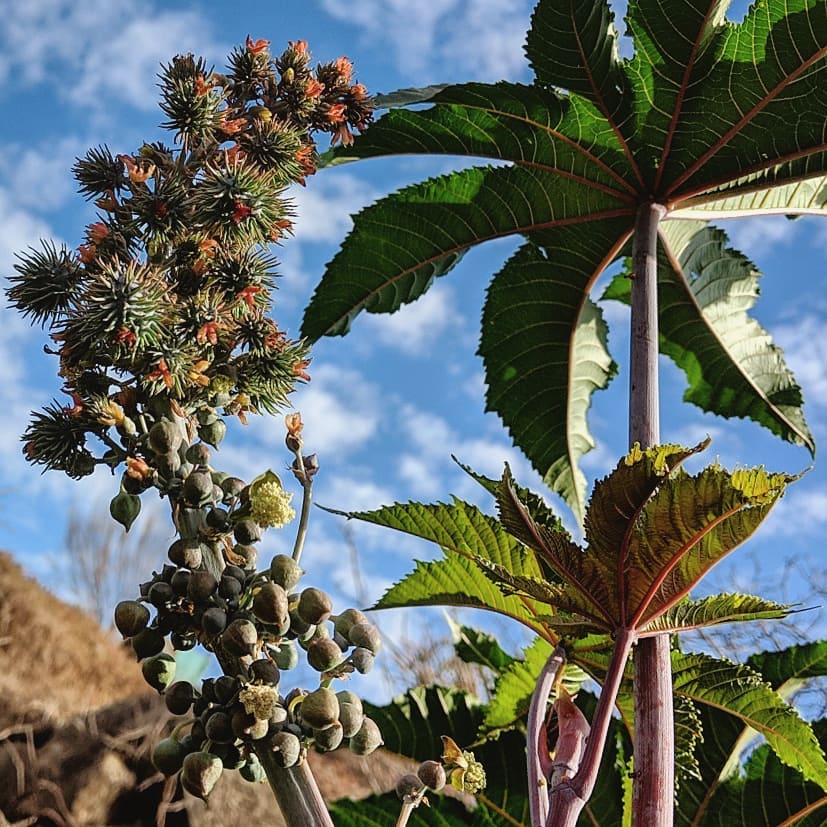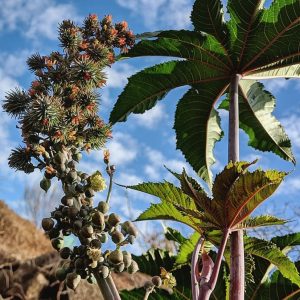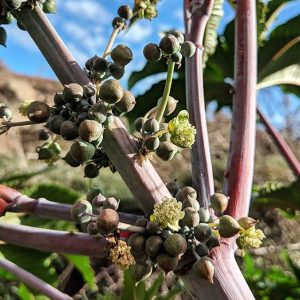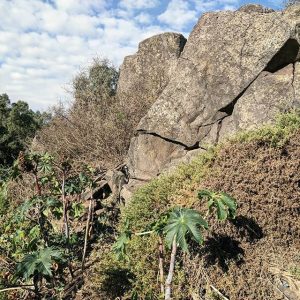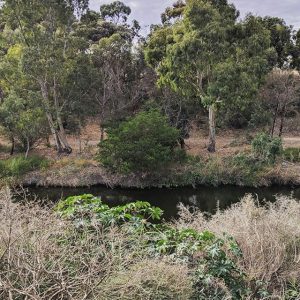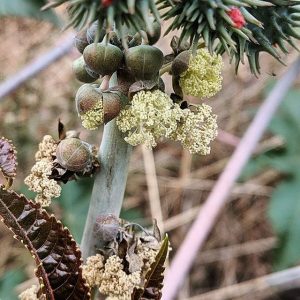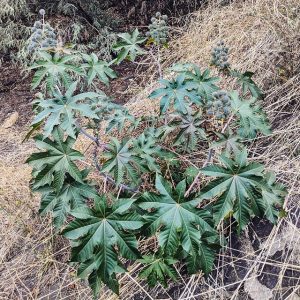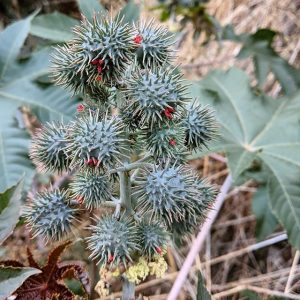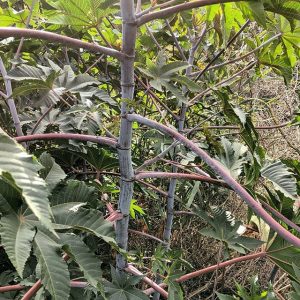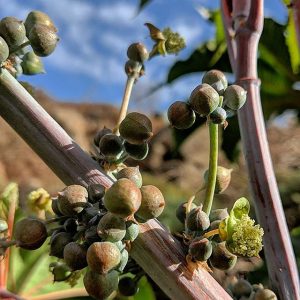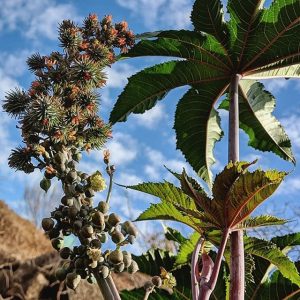Castor Oil Plant (Ricinus communis), revisited in environmental positions on Merri Creek and Kororoit Creek.
This channel has already covered this East African species’ urban colonies in Collingwood and Clifton Hill, and its intentional introduction into Australia as a cash crop. A common denizen of coastal NSW and Queensland, the range of Castor Oil Plant has been limited in Victoria by its frost sensitivity; however, as frost days dwindle here we can expect this plant to become increasingly widespread and tenacious in its infestation of disturbed infrastructural and riparian sites.
Riparian colonies like these, which are subject to high turnover from both flood events and the management activities of both council staff and volunteer groups, tend to be represented by younger plants than the woody and nearly senescent thickets of Victoria Park. As one 1930s Brisbane writer observed of Castor Oil Plant’s growth pattern, ‘quiescent in winter, spring sets the mechanism in motion, while in midsummer it surges ahead and almost visibly grows while you wait.’ Many of the riparian plants appear to operate effectively as annuals, starting after the recession of winter flooding (which has often floated the explosively released seed to new locations) and flowering and fruiting late that same year.
View Original Post on Instagram
Search for information about Ricinus communis in the Flora of Victoria
View information and occurrences of Ricinus communis on the Atlas of Living Australia
